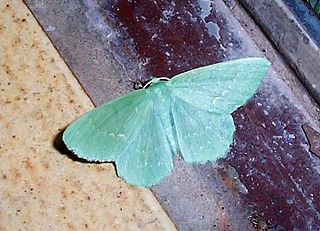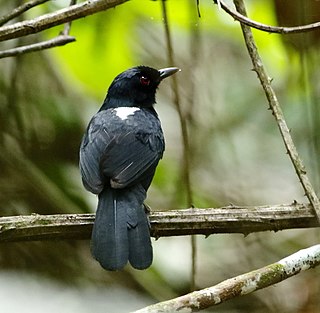
The black-throated loon, also known as the Arctic loon and the black-throated diver, is a migratory aquatic bird found in the northern hemisphere, primarily breeding in freshwater lakes in northern Europe and Asia. It winters along sheltered, ice-free coasts of the north-east Atlantic Ocean and the eastern and western Pacific Ocean. This loon was first described by Carl Linnaeus in 1758 and has two subspecies. It was previously considered to be the same species as the Pacific loon, of which it is traditionally considered to be a sister species, although this is debated. In a study that used mitochondrial and nuclear intron DNA, the black-throated loon was found to be sister to a clade consisting of the Pacific loon and two sister species, the common loon and the yellow-billed loon.

The wood sandpiper is a small wader. This Eurasian species is the smallest of the shanks, which are mid-sized long-legged waders of the family Scolopacidae. The genus name Tringa is the Neo-Latin name given to the green sandpiper by Aldrovandus in 1599 based on Ancient Greek trungas, a thrush-sized, white-rumped, tail-bobbing wading bird mentioned by Aristotle. The specific glareola is from Latin glarea, " gravel".

The white-winged scoter is a large sea duck. The genus name is derived from Ancient Greek melas "black" and netta "duck". The species name commemorates French ornithologist Côme-Damien Degland.

The large emerald is a moth which is the type species for the family Geometridae. It is found throughout the Palearctic region and the Near East in and around deciduous forests, heathlands, marshland and in settlements close to woodland. The species was first described by Carl Linnaeus in his 1758 10th edition of Systema Naturae.

The collared aracari or collared araçari is a near-passerine bird in the toucan family Ramphastidae. It is found from Mexico to Colombia and Venezuela.

The snow pigeon is a species of bird in the genus Columba in the family Columbidae from hilly regions of central Asia. They are grey, black, pale brown and white birds and two subspecies are recognised: C. l. leuconota occurs in the western Himalayas from western Afghanistan to Sikkim and C. l. gradaria occurs in the mountains of eastern Tibet and from eastern Nan Shan (Qinghai) to Yunnan and extreme northern Myanmar. The birds forage in open country in pairs or small groups, feeding on grain, buds, shoots, berries and seeds. They roost at night on cliffs, breeding in crevices where they build untidy stick nests and lay a clutch of usually two white eggs. The International Union for Conservation of Nature has rated the bird's conservation status as being of least concern.

The East Amazonian fire-eye is an insectivorous bird in the antbird family Thamnophilidae. It is found in Brazil. Its natural habitats are subtropical or tropical dry forests, subtropical or tropical moist lowland forests, and subtropical or tropical moist montane forests.

The stripe-billed aracari or stripe-billed araçari is a near-passerine bird in the toucan family Ramphastidae. It is found in Colombia, Ecuador, and Panama.

The lesser spot-nosed monkey, also known as the lesser spot-nosed guenon, lesser white-nosed guenon, or lesser white-nosed monkey, is a species of primate in the family Cercopithecidae. It is found in Ivory Coast, Ghana, Guinea, Liberia, Sierra Leone, Togo, Guinea-Bissau, and possibly Senegal.

The American herring gull or Smithsonian gull is a large gull that breeds in North America, where it is treated by the American Ornithological Society as a subspecies of herring gull.

Agnippe is a genus of moths in the family Gelechiidae.

Lyonetia prunifoliella is a moth in the family Lyonetiidae.

Agnippe laudatella is a moth of the family Gelechiidae. It is found in California, United States.
Agnippe albidorsella is a moth of the family Gelechiidae. It is found in Russia, China, Korea and Japan.
Scoparia leuconota is a moth in the family Crambidae. It was described by Oswald Bertram Lower in 1902. It is found in Australia, where it has been recorded to be found near South Australia.
Agnippe aulonota is a moth in the family Gelechiidae. It is found in Ecuador.
Agnippe abdita is a moth in the family Gelechiidae. It is found in North America, where it has been recorded from Utah, Arizona and California.
Agnippe biscolorella is a moth in the family Gelechiidae. It is found in North America, where it has been recorded from Illinois, Maryland, Ohio, West Virginia and Kentucky.
Agnippe evippeella is a moth in the family Gelechiidae. It is found in North America, where it has been recorded from Texas, Cuba and Puerto Rico.

Agnippe prunifoliella is a moth in the family Gelechiidae. It is found in North America, where it has been recorded from Alabama, Alberta, Arizona, Arkansas, British Columbia, California, Florida, Illinois, Indiana, Kansas, Kentucky, Louisiana, Maine, Maryland, Mississippi, North Carolina, Oklahoma, Quebec, South Carolina, Tennessee, Texas and West Virginia.












